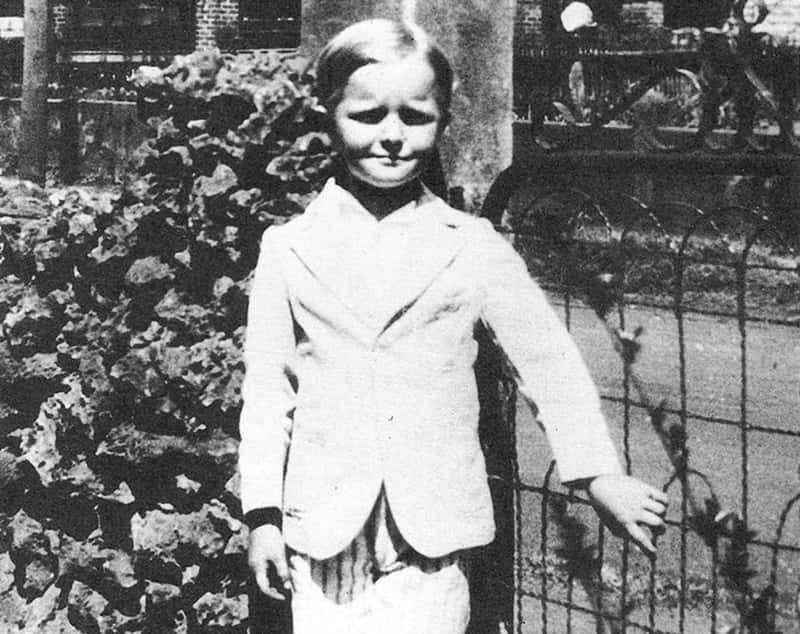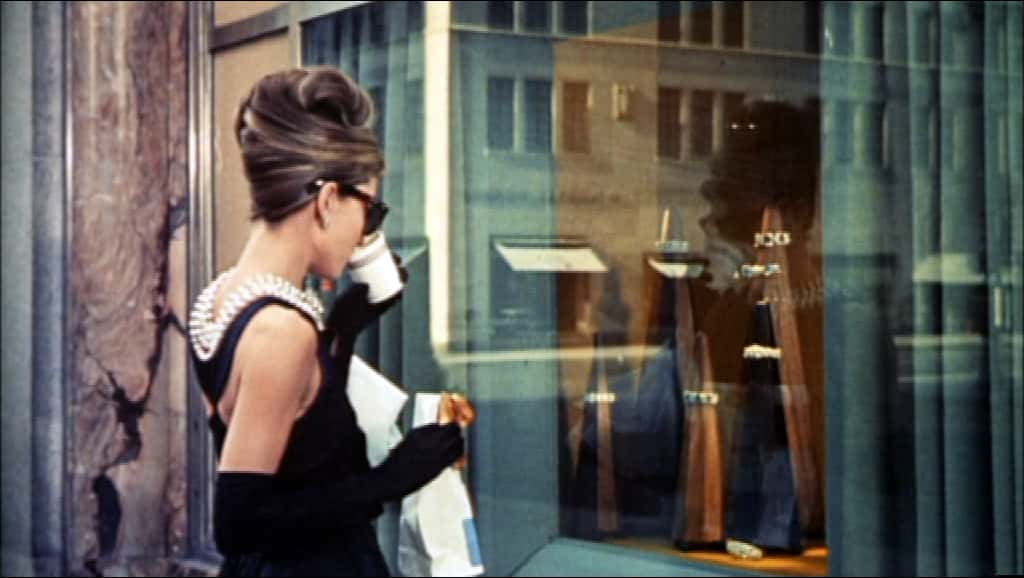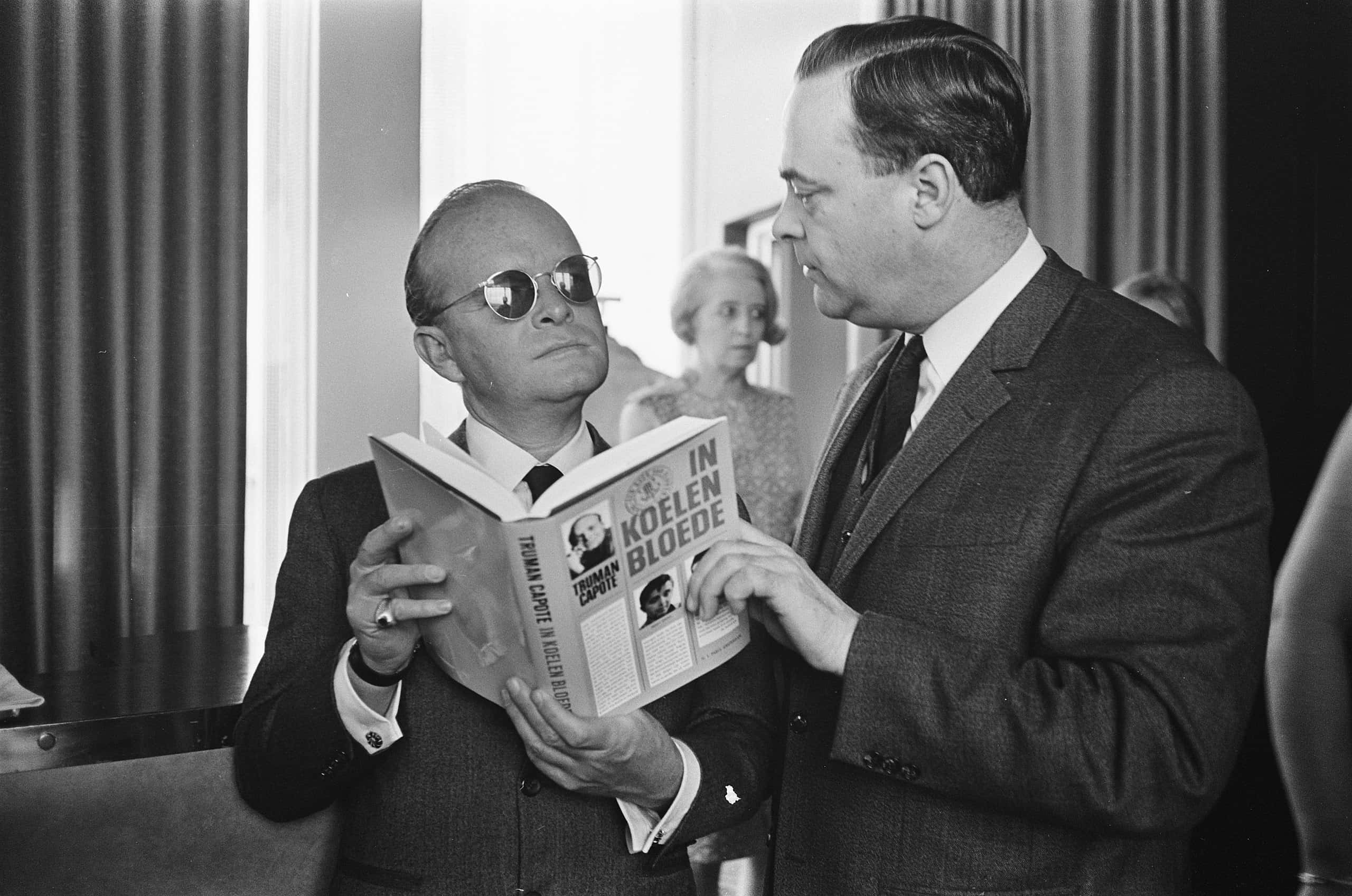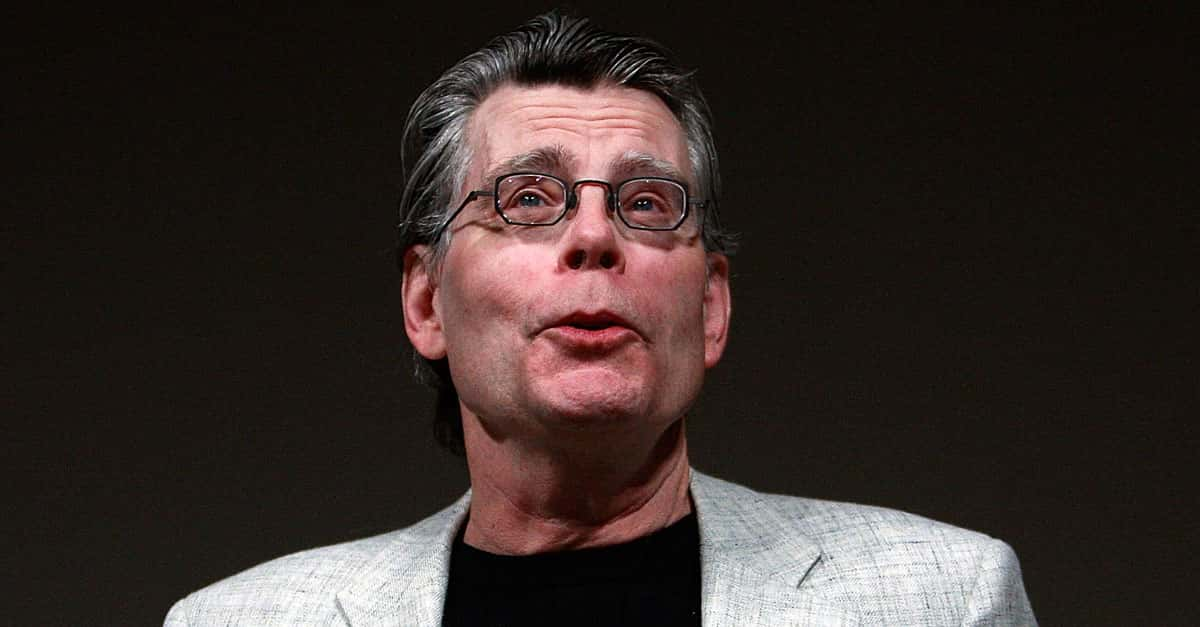"Life is a moderately good play with a badly written third act"—Truman Capote
Truman Capote won’t necessarily top too many people's top five authors list, but he was a force to be reckoned with in American literary history. He was known for his small stature, his high-pitched voice, and his eccentric mannerisms. His true crime novel In Cold Blood, about a horrific real-life crime, was a bestseller and greatly influenced its genre for years to come. His written works, as well as his much-storied life, have inspired dozens of films. On top of all that, Capote was an openly gay man during decades where refusing to repress one’s true desires would have meant the end of their career, and possibly their life. It’s safe to say that there are a lot of interesting facts about Capote, so we here at Factinate have obliged to find the best ones for your reading pleasure!
1. Oh What’s in a Name?
Truman Capote’s original name had been Truman Streckfus Persons, but he adopted the name "Capote" from his stepfather (to be honest, many people would say that was a wise choice on his part).
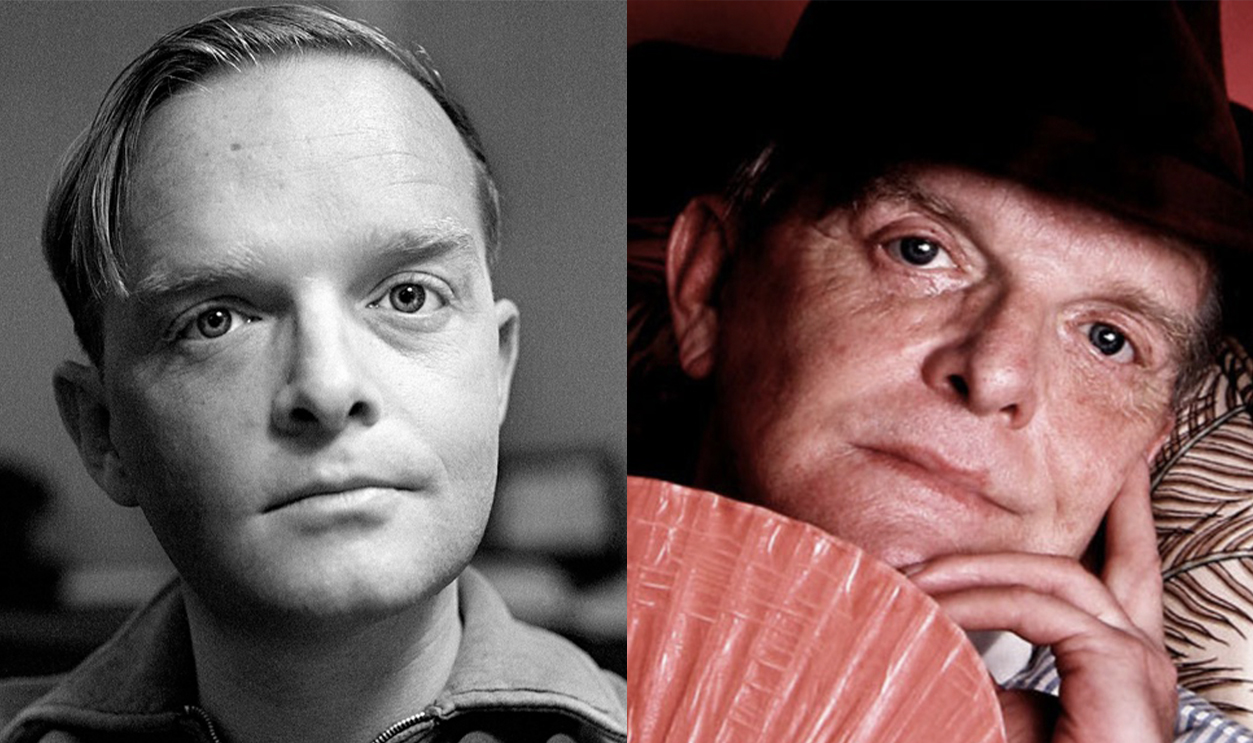
2. Immortalized in Literature
Capote was the famous inspiration behind the character of Dill Harris in Harper Lee’s To Kill a Mockingbird. Capote and Lee had grown up together and remained good friends for many years (sadly, they distanced from each other after Capote published In Cold Blood).
3. Humble Origins
Truman Capote was born in New Orleans to a 17-year old woman named Lillie Mae Faulk. She and Capote’s father, Archulus Persons, divorced when Capote was just four years old. After this, Capote grew up in Alabama, where he befriended Harper Lee.
4. Starting Young
According to Capote himself, he first began writing seriously when he was eleven years old. He would write for three hours every day after school, with Capote comparing this habit to other children practicing a sport or musical instrument.
5. The Last Laugh
While Capote was socializing with the Hollywood elite in the 1960s, he heard a story about legendary law figure J. Edgar Hoover, who was the director of the FBI at the time. Capote heard a rumor from "an ex-wife of an alleged mobster" that not only was Hoover gay, but he was fond of wearing women’s clothes. As an openly gay man, Capote was well aware of Hoover’s ruthless persecution of LGBTQ people, so this rumor was music to Capote’s ears. He proceeded to spread the rumor as far and wide as he could manage, which wasn’t to be understated, given his prestigious company. At one point, he was asked if he actually believed the rumor, he cheerfully replied: "Who cares?" Whether it’s true or not, the rumor has endured to this very day, partly thanks to Capote’s revenge.
6. Self-Taught
Before Capote had entered the first grade in school, he had managed to teach himself how to read and write. Safe to say that Capote was born to the written word!
7. Quid Pro Quo
While most people know that Truman Capote inspired a literary character created by his friend, Harper Lee, Capote also returned the favor. The character of Idabel in Other Voices, Other Rooms is based on Lee, though it’s safe to say that fewer school kids have read that story.
8. Would You Say That Capote Couldn’t Get No Satisfaction?
In 1972, Capote was hired by Rolling Stone to be a temporary correspondent. Capote was tasked with covering (fittingly) the Rolling Stones while they embarked on their Exile on Main St. tour. However, while Capote did travel with the band, he later admitted that while he enjoyed the trip, he lost all interest in the article from a creative perspective.
9. Name Change
The female lead from Breakfast at Tiffany’s is famously called Holly Golightly. However, that wasn’t Capote’s original idea for her name; he first called her Connie Gustafson. This was changed to Holiday Golightly before eventually shortening that mouthful to the version you’re all familiar with.
10. Second Place is Respectable Enough!
As of 2018, Capote’s novel In Cold Blood remains to be the second-best-selling true crime book in American history. The only other book of that genre which has surpassed In Cold Blood is Vincent Bugliosi’s 1974 novel Helter Skelter (based on the Charles Manson offenses, rather than the Beatles song).
 In Cold Blood, 1967, Columbia Pictures
In Cold Blood, 1967, Columbia Pictures
11. Ready for the Close-Up?
Truman Capote has been portrayed several times on stage, film, and television. Among the actors who have acted as Capote are Robert Morse, Philip Seymour Hoffman (who won an Oscar for his portrayal), Michael J. Burg, and Toby Jones.
12. Heck of a Writer!
During his lifetime, Capote’s body of work included twenty-five plays, over a hundred poems, sixty short stories, but only two novels.
13. Diverse Palate
Aside from the films which were adapted from his written works, Capote also tried his hand at screenwriting several times. His credits as a screenwriter include three films; the Italian dramatic romance film Station Terminus (for which he wrote English dialogue), the John Huston action/comedy Beat the Devil, and the horror film The Innocents.
 Beat the Devil, 1953, Santana Productions
Beat the Devil, 1953, Santana Productions
14. Determined Worker
In the case of Beat the Devil, Truman Capote was brought onto the project when he was recommended by the producer, David O. Selznick. He wrote the script while it was being filmed, working two or three days ahead of production. Humphrey Bogart later declared that Capote "wrote like fury".
 Beat the Devil, 1953, Santana Productions
Beat the Devil, 1953, Santana Productions
15. Many Happy Returns!
Coincidentally, Capote shared a birthday with Deborah Kerr, who starred in The Innocents. Both were born on the 30th of September (albeit in different years).
16. There’s Been a Massacre
In 1959, Capote read an article in The New Yorker (long after he'd been fired) about a horrifying quadruple murder. Four members of the Clutter family had their lives brutally taken in Holcomb, Kansas, and their house was robbed. Capote was so fascinated that he traveled to the community, accompanied by his longtime friend Harper Lee so that she could help Capote gain the community’s trust.
17. Research Period
In total, Capote compiled a total of 8,000 pages’ worth of notes when he interviewed members of the community about the Clutter family, their murder, and the aftermath. He would spend six years putting together In Cold Blood, even as he also interviewed the two murderers, Richard Hickock and Perry Smith, when they were in prison after being captured six weeks following the brutal event.
18. Fiction with the Fact
In Cold Blood took the US by storm when it was published, proving a new standard for true crime books to live up to. However, several critiques eventually emerged, listing certain parts of the book which hadn’t actually happened in real life. Alvin Dewey, who had led the investigation into the murder case which had inspired the book, claimed that one scene near the end of the book involving him was purely invented by Capote. Writer Jack Olsen was particularly vitriolic in his criticisms of Capote fabricating events or dialogue, but Capote dismissed Olsen as simply being envious of In Cold Blood’s success.
 In Cold Blood, 1967, Columbia Pictures
In Cold Blood, 1967, Columbia Pictures
19. Going Out on the Best One
The impact of writing In Cold Blood over those six years took a serious toll on Truman Capote, and despite the wild success of the book, Capote never finished another full-length novel for the rest of his life.
20. Romance on the Page
One of Capote’s first lovers was Newton Arvin. Arvin was a literature professor at Smith College who won the National Book Award in 1951 for a biography on Herman Melville. Capote dedicated Other Voices, Other Rooms to Arvin.
21. That’s the Way I Like It!
During the 1970s, Capote would often visit Studio 54, the well-known disco in New York City.
22. Written by Myself!
In 1959, Holiday Magazine published an autobiographical piece written by Capote which focused on his time living in Brooklyn Heights. It was later published as part of an anthology titled Brooklyn: A Personal Memoir, With The Lost Photographs of David Attie.
23. Color Codes
Every writer has their own method when it comes to their craft. In Capote’s case, one habit he maintained was that he would write his first drafts out in yellow paper. When he was satisfied with how his writing had turned out, he would type out the final version onto white paper.
24. Adapting the Book
As of 2018, three films have been made based on Capote’s novel In Cold Blood. The first film was released in 1967, just a year after the book was first released. Directed by Richard Brooks and starring Robert Blake, the film followed the events of the novel and was nominated for four Oscars, including Best Picture and Best Director.
 In Cold Blood, 1967, Columbia Pictures
In Cold Blood, 1967, Columbia Pictures
25. Adapting the Author
By contrast, the other two films based on In Cold Blood are more interested in the process that Truman Capote himself went through to complete the novel. Interestingly, both films came out barely a year apart from each other. The first one, Capote, was released in 2005 and earned Philip Seymour Hoffman an Oscar for his performance as the eccentric writer. The later film, Infamous, sadly fell short of the first film and was left to be overshadowed, despite Toby Jones’ acclaimed performance as Capote, which some have said even eclipsed Hoffman's.
26. I’d Have Been Gone, Gone, Gone
Years after the success of In Cold Blood, and after the toll it took upon Capote to complete the novel, he reflected that if he’d known what would happen when he’d first traveled down to Holcomb, Kansas, he would never have stopped there at all. Rather, as he allegedly stated, he would have gone straight past Holcomb and fled the place "like a bat out of [Hades]". We can only imagine that Meat Loaf heard that comment and was inspired.
 In Cold Blood, 1967, Columbia Pictures
In Cold Blood, 1967, Columbia Pictures
27. Odd Cameo to Make
Those of you who watched the Woody Allen romantic comedy Annie Hall might remember a scene where Allen’s character jokingly claims a passing gentleman is the "winner of the Truman Capote lookalike contest". As it turns out, that man was played by none other than Truman Capote himself!
28. Changing Literature History
Surprisingly, Truman Capote was the reason that another famous American writer got his big break into the world of literature. In the 1930s, a very young Capote was working as an assistant editor with Mademoiselle magazine. One day, Capote came across a story called Homecoming and liked it so much that he urged the editor to have it published in the magazine. The story was written by a young Ray Bradbury, who would go on to write such novels as Fahrenheit 451.
29. Did He Name It Too?
While he was living in Alabama, Capote was looked after by his mother’s relative, Nanny Rumbley "Sook" Faulk. One thing which Sook did for the infant Capote was make him a security blanket. Capote was so attached to the blanket that he kept it with him as an adult. He even allegedly had the blanket on his person on the day that he passed.
30. This is Meta
Capote was a famously superstitious man, always worried about bringing bad luck upon himself. As a result, he would never begin or finish a written work on a Friday, nor would he even stay in a hotel room which featured the number "13". Maybe out of respect to his memory, we should have deleted "13" from this list.
31. End Date
On the 25th of August 1984, Truman Capote was visiting his old friend Joanne Carson (Johnny Carson’s ex-wife) when he tragically passed at the age of 59. The cause of his demise was reported to have been "liver disease complicated by phlebitis and multiple drug intoxication".
32. A Big Talker
During his life, Capote claimed to have had intimate friendships with famous celebrities, but in some of the cases (such as with screen legend Greta Garbo), it was revealed to be an exaggeration at best. Capote even claimed to have had intimate encounters with known straight actors such as Errol Flynn.
33. Interesting Connection
One of Capote’s closest friends in the 1960s was actress Lee Radziwill, who was Jackie Kennedy Onassis' sister.
34. Lover or Brother?
You might be wondering why Truman Capote thought he could ever be considered to act as the male romantic lead in the film adaptation of Breakfast at Tiffany’s. Partly, it’s because Capote based the character on himself when he wrote the novella. And in the novella, the character of Paul (who is the unnamed narrator of the book) is not a romantic lead at all! The love story in Breakfast at Tiffany’s was entirely constructed for the film. Meanwhile, the narrator in the book is clearly uninterested in the character of Holly, who looks at him as a surrogate brother figure rather than a love interest.
35. Tougher Than He Looks
While Capote was working on Beat the Devil, he on the film set when star Humphrey Bogart challenged the diminutive Capote to an arm-wrestling match. Capote agreed, beating the famous movie star. Astonished at his defeat, Bogart demanded a rematch, to which Capote only agreed if the winner won $50. After he won a second time, Bogart continued to challenge him until the two of them were full-on wrestling each other. Director John Huston would go on to cheerfully remark that the "little bull," as he called Capote, "put Bogie on his [butt]".
36. Love of My Life
Truman Capote spent most of his life in a relationship with writer Jack Dunphy. Despite the longevity of their relationship, they seem to have had very separate lives at different points in time. Dunphy later said he was distressed by Capote’s addictions to substances and booze, so the occasional distance helped him avoid that side of Capote. After their passings (Capote’s in 1984 and Dunphy’s in 1992), their ashes were scattered at the "Long Pond Greenbelt," a conservation area purchased from the money of their estates, as per their wills.
37. Hiding in Plain Sight
In 2013, no fewer than fourteen unpublished stories written by the teenaged Capote were discovered by a Swiss publisher named Peter Haag. They had been hiding in the New York Library archives for years. When they were uncovered, Capote’s short stories were published by Random House in 2015 under the compilation title The Early Stories of Truman Capote.
38. Nothing Gold Can Stay
When Truman Capote was a teenager and enrolled in a private school in New York City, he was employed at The New Yorker. Capote spent two years working as a copyboy for the art department, but this ended when Capote managed to infuriate the renowned American poet Robert Frost!
 Wikimedia Commons, Robert Knudsen
Wikimedia Commons, Robert Knudsen
39. Four out of Five is Eerie
Most people have at least heard of the chilling murders carried out in the home of actress Sharon Tate under the instruction of cult leader Charles Manson. It just so happens that Capote happened to know four of the five murder victims independently of each other. As Capote put it, "I’d met Sharon Tate at the Cannes Film Festival. Jay Sebring cut my hair a couple of times. I’d had lunch once in San Francisco with Abigail Folger and her boyfriend, Frykowski".
40. Truman vs. Audrey
Most people have been made aware of actress Audrey Hepburn thanks to her starring role in the film adaptation of Capote’s novella Breakfast at Tiffany’s—but one person who absolutely despised her in the role was Capote himself. He accused the studio of double-crossing him by daring to cast Hepburn in the role. Even though he personally knew Hepburn and had described her fondly in the past, Capote was ruthless in his criticism of her presence in the film, declaring that her casting made him "want to throw up". No wonder Hepburn was uncomfortable whenever he was on the film set!
41. If I Had a Say…
You might be wondering why exactly Capote was so enraged by the casting of Audrey Hepburn in the lead role of Breakfast at Tiffany’s. The answer is that he, like so many writers before him, had written the novella with a specific person in mind to play the protagonist. That person was none other than Marilyn Monroe, who despite being remembered as a beauty, was still trying to be a legitimate actress. We’ll never know for sure how she would have fared in the film, but it’s safe to say that she would have at least been qualified to act in the movie, unlike Capote’s dream choice for the male lead—himself!
42. Posthumous Publishing
In the 1940s, Truman Capote spent a significant amount of time working on a novel, but he later claimed to have given up and gotten rid of the manuscript. However, in 2004, it was discovered that in 1950, a house sitter was in the apartment which Capote had lived in and discovered a manuscript in the trash. The manuscript followed a love story in New York City between "a socialite and a parking lot attendant". Random House published the story under the title Summer Crossing in 2006.



